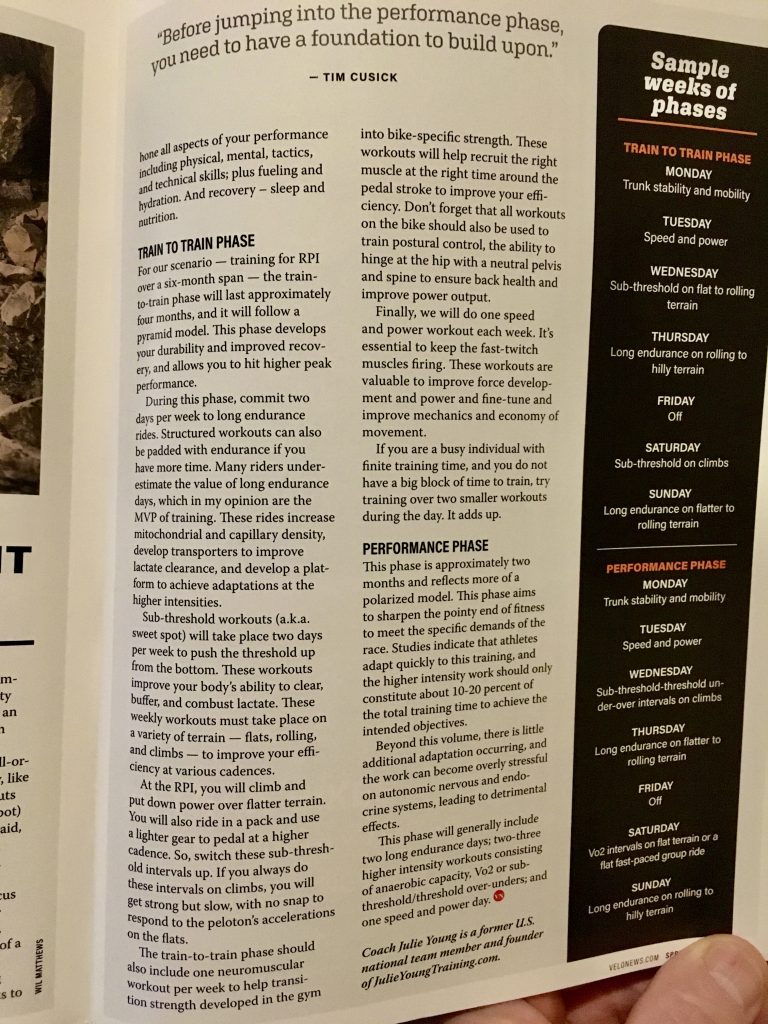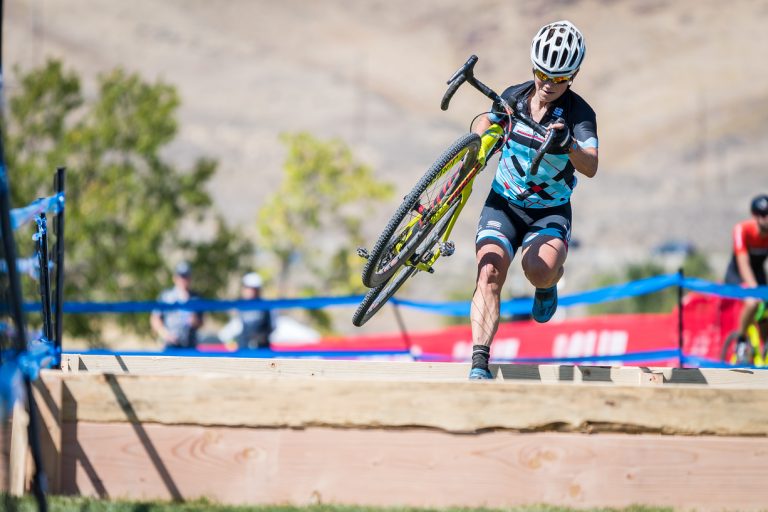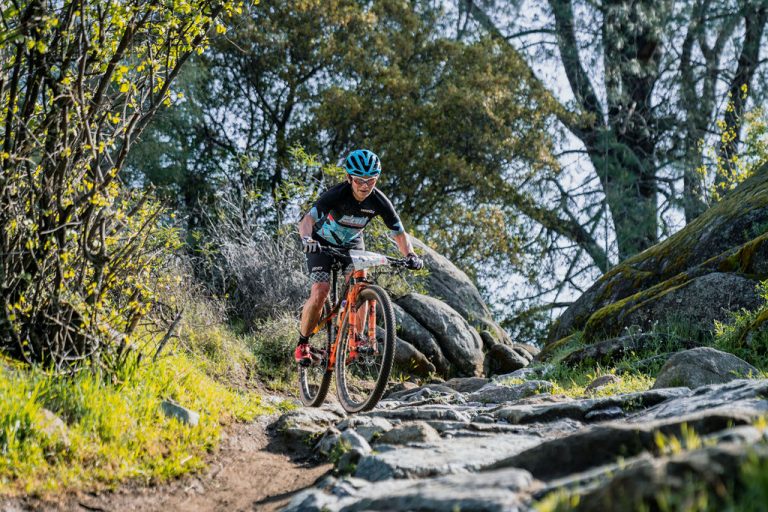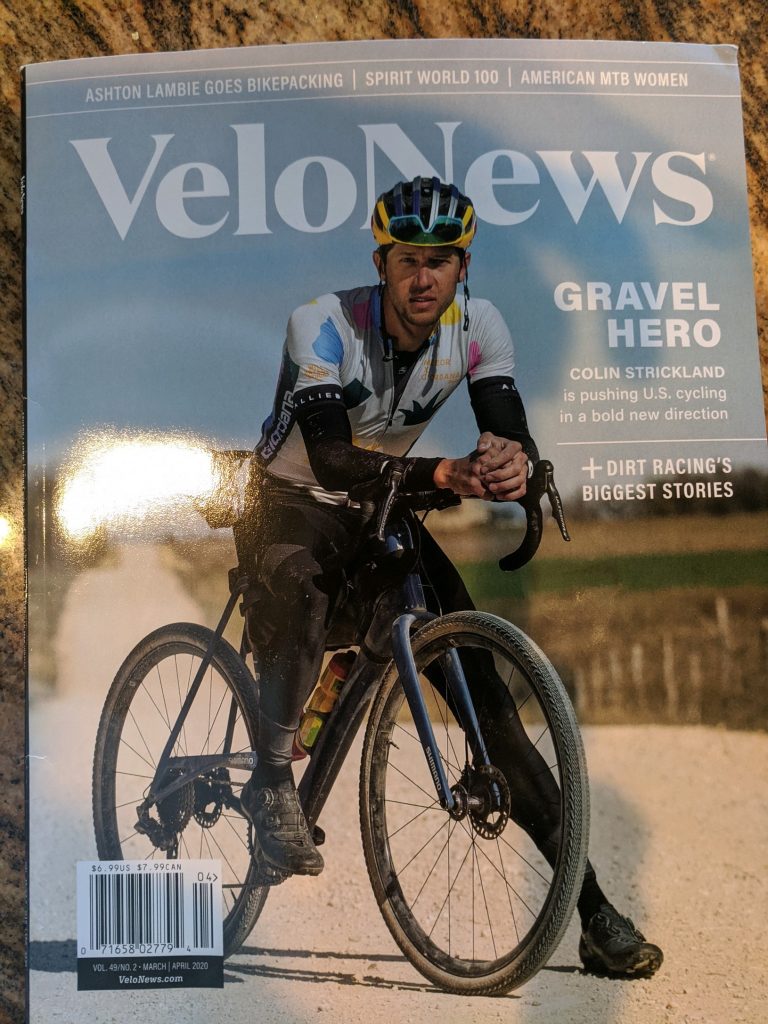Rock Your Next Gravel Event – A six-month plan to thrive, not just survive, at your next gravel event – Velo News Spring 2021
Gravel events are in many ways the most demanding of all the cycling disciplines. Riders must endure long distances, and tough terrain, and simply finishing some events – let alone racing them – requires plenty of training. And right now, gravel events are booming in popularity.
Are you ready to race? For this column I’ve drawn up a training plan to help you prepare for your gravel race in 2021. For the purposes of this column, I’ve chosen Rebecca’s Private Idaho (RPI) as the race to train for. It’s one of my personal favorites and the 2021 race is scheduled for September 5, 2021.
Tim Cusick, who coaches the race founder, Rebecca Rusch says, “I like to train athletes to prepare for these events in two phases – the train-to-train phase and the performance phase. Before jumping into the performance phase, you need to have a foundation to build upon. The reality is that you can’t just jump into to the performance phase, you need to have a foundation to build upon.”
Tim has a few starting points in developing a plan – understanding the limiters and strengths of the athlete and the event’s demands. RPI takes place at altitude and includes significant distance and elevation gain, headwinds, and rough and unpredictable surfaces. Therefore, it’s critical to condition your entire body. For example, your back may be more of a limiter than your legs and lungs. Include consistent off-bike stability and mobility work to ensure your body, your most important piece of equipment, is functioning at an optimal level.
Training does not have to be all or nothing in terms of methodology like polarized or pyramidal or workouts like sub-threshold (a.k.a. sweet spot) or high-intensity intervals. Tim says, “In the train-to-train phase, I use a pyramidal training model. But when we transition to the performance phase, where the focus becomes preparing the athlete for the specific demands of the event, the training plan resembles more of a polarized model.”
To fully maximize your training time, be mindful of using workouts to hone all aspects of your performance including – physical, mental, tactics, and technical skills; and fueling and hydration. And recovery – sleep and nutrition.

Train to Train Phase
For our scenario, training for RPI over six months, the train-to-train phase will last approximately four months and follows a pyramidal model. This phase develops your durability, resiliency, and improved recovery and allows you to hit higher peak performance.
During this phase, we commit two days per week to long endurance. Structured workouts can also be padded with endurance if you have more time. Recreational and master athletes often fall victim to training too hard on their easy days and not hard enough on their hard days, missing out on valuable adaptations. Many riders underestimate the value of long endurance days. Long endurance is the MVP of training. It increases mitochondrial and capillary density, develops transporters to improve lactate clearance, and develops a platform to achieve adaptations at the higher intensities. And all of these critical adaptations occur with minimal stress on the autonomic nervous and endocrine system, which is key to sustainability and avoidance of over-training.
Sub-threshold workouts (a.k.a. sweet spot) will take place two days per week to push the threshold up from the bottom. It improves your body’s ability to clear, buffer and combust lactate. These weekly workouts must take place on a variety of terrain, flats, rolling, and climbs to improve your efficiency at various cadences. At the RPI, sure, you have some climbing, but you also need to put down power over flatter terrain. Also, on certain flatter sections of RPI, it is valuable to take advantage the pack when sitting in and shift into one lighter gear to pedal at a higher cadence. It places less load on the muscles and is money in your account when you want it. If, for example, you always do these intervals on climbs, you will get strong but slow, with no snap to respond to the peloton’s accelerations on the flats.
This phase will also include one neuromuscular workout per week to help transition strength developed in the gym into bike-specific strength. These workouts will help recruit the right muscle at the right time around the pedal stroke to improve your efficiency. Don’t forget that all workouts on the bike should also be used to train postural control, the ability to hinge at the hip with a neutral pelvis and spine to ensure back health and improve power output.
Finally, in this phase, we will also include a speed and power workout each week. It’s essential to keep the fast-twitch muscles firing. These workouts are valuable to improve force development and power and fine-tune and improve mechanics and economy of movement.
If you are a busy individual with finite training time and do not have a big block of time to train, try training over two smaller workouts during the day. Those consistent small deposits add up.

Performance Phase
This phase is approximately two months and reflects more of a polarized model. This phase aims to sharpen the pointy end of fitness to meet the specific demands of the event. However, studies indicate that athletes adapt quickly to this work, and the higher intensity work should only constitute about 10-20 % of the total training time to achieve the intended objectives. Beyond this volume, there is little additional adaptation occurring, and the work can become overly stressful on autonomic nervous and endocrine systems, leading to detrimental effects.
This phase will generally include two long endurance days; two-three higher intensity workouts consisting of anaerobic capacity, Vo2 or sub-threshold/threshold over-unders; and one speed and power day.
Sample weeks of phases
Train to train phase
Mon – Trunk stability + mobility
Tues – Speed and power
Wed –Sub-threshold on flat to rolling terrain
Thurs – Long endurance on rolling to hilly terrain
Fri – Off
Sat – Sub-threshold on climbs
Sun – Long endurance on flatter to rolling terrain
Performance phase
Mon – Trunk stability + mobility
Tues – Speed and power
Wed –Sub-threshold-threshold under-over intervals on climbs
Thur – Long endurance on flatter to rolling terrain
Fri – Off
Sat – Vo2 intervals on flat terrain or a flat fast-paced group ride
Sun – Long endurance on rolling to hilly terrain







